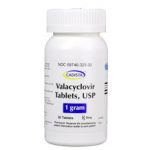
What’s the Difference Between Buttermilk and Regular Milk and Is It Good For You?
Buttermilk is a cultured milk product that is rich in nutrients and healthy fats.
What is buttermilk? It’s soured milk that is nutritionally comparable to skim milk but has a tarter taste.
The U.S. Department of Agriculture (USDA) estimates that 90% of U.S. citizens don’t get enough dairy every day. Try buttermilk for a unique and healthy way to add dairy to your diet.
Buttermilk is a top waste product of the dairy industry. It’s the liquid byproduct created when cream is churned into butter.
There are different kinds of buttermilk, including:
- Sweet buttermilk. Made from churning sweet cream.
- Cultured buttermilk. Fermented sweet buttermilk with bacteria that provide probiotic qualities to the milk.
- Whey buttermilk. Made from whey protein churned during the butter-making process.
What nutrients are in buttermilk?
Buttermilk contains proteins, fats, milk fat globule membrane (MFGM) constituents, minerals, and other micronutrients, especially calcium.
Check the nutrition label to find the kind of buttermilk that best meets your body’s needs.
In 100 grams of buttermilk, whole buttermilk (WB) contains:
- Water — 87.9 grams
- Protein — 3.21 grams
- Total fat — 3.31 grams
- Carbohydrates — 4.88 grams
- Calcium — 115 milligrams
- Iron — 0.03 milligrams
- Magnesium — 10 milligrams
- Phosphorus — 85 milligrams
- Potassium — 135 milligrams
- Sodium — 105 milligrams
- Zinc — 0.38 milligrams
- Copper — 0.025 milligrams
- Manganese — 0.004 milligrams
- Selenium — 3.7 micrograms
- Thiamin — 0.047 milligrams
- Riboflavin — 0.172 milligrams
- Niacin — 0.09 milligrams
- Vitamin B-6 — 0.036 milligrams
- Vitamin B-12 — 0.46 micrograms
- Vitamin A — 165 international units
- Vitamin E — 0.07 milligrams
- Vitamin D — 52 international units
- Vitamin K — 0.3 micrograms
- Folate — 5 micrograms
- Choline — 14.6 milligrams
The nutritional differences between whole-fat and low-fat buttermilk are mainly in the fat content.
How does buttermilk compare to regular milk?
Buttermilk and regular milk have similar nutrients, but in different amounts due to the butter-making process.
Both contain proteins, carbohydrates, calcium, and other micronutrients like magnesium and potassium.
Both can be consumed as a beverage or used in baking, as they serve similar functions when cooking and baking.
What are the benefits of consuming buttermilk?
Buttermilk’s health benefits come from its nutrients, notably the milk fat globule membrane (MFGM) constituents.
These constituents contain beneficial fats and proteins that can lower cholesterol, have anti-inflammatory effects, and positively impact the nervous system.
The proteins in buttermilk have antioxidant and anti-microbial properties that improve the immune system.
If fermented with probiotic bacteria, buttermilk can benefit the gut microbiome.
Studies have shown that consuming buttermilk can significantly lower cholesterol levels.
QUESTION
How much buttermilk should you consume?
The amount of buttermilk to consume depends on your overall dairy intake. The USDA recommends about three servings or cups of dairy per day for males and females over the age of 9.
Who shouldn’t drink buttermilk?
Avoid buttermilk if you are lactose intolerant or allergic to milk proteins.
Lactose intolerant individuals have difficulty digesting lactose, while those with milk allergies are specifically allergic to milk proteins.
If you have either condition, it’s best to avoid dairy products.
How should you use buttermilk?
Buttermilk can be used in baked goods or substituted for regular milk in gluten-free recipes to thicken batters and provide a lighter texture.
Commercially available buttermilk products can be mixed with fruit juices to mask the taste while still providing nutrients.
Another option is kefir, a fermented milk product similar to buttermilk but with more live bacterial cultures.
Enjoy buttermilk in various ways to reap its nutritional benefits.
Sources:
Food Science & Nutrition: "Buttermilk ice cream—New method for buttermilk utilization."
Food Technology & Biotechnology: "Valorisation of Whey and Buttermilk for Production of Functional Beverages – An Overview of Current Possibilities."
Golisano Children’s Hospital: "Lactose Intolerance."
Intermountain Primary Children’s Hospital: "Living gluten-free."
Johns Hopkins Medicine: "Milk Allergy Diet."
St. Luke’s Health: "Cornbread and Buttermilk."
USDA MyPlate: "Dairy."
U.S. Department of Agriculture: "Buttermilk, low fat," "Milk, buttermilk, fluid, whole," "Milk, lowfat, fluid, 1% milkfat, with added vitamin A and vitamin D," "Milk, whole, 3.25% milkfat, with added vitamin D."
U.S. Department of Agriculture: "Buttermilk, low fat," "Milk, buttermilk, fluid, whole," "Milk, lowfat, fluid, 1% milkfat, with added vitamin A and vitamin D," "Milk, whole, 3.25% milkfat, with added vitamin D."


